RIKLBLOG
|
| Tomorrow |
| 03 June 2019 |
| Yesterday |
| Index |
| Eventide |
| SETI League |
| PriUPS Project |
| Bonus! |
| Contact |


It's Been a Long Time Since I Wrote a "How To"
I must be good at it, though, because in all the years since I wrote "How to Bananafy the Bun" I haven't had a single request for clarification.
Here's a How To on how to fill an empty space in your front yard with a boulder.
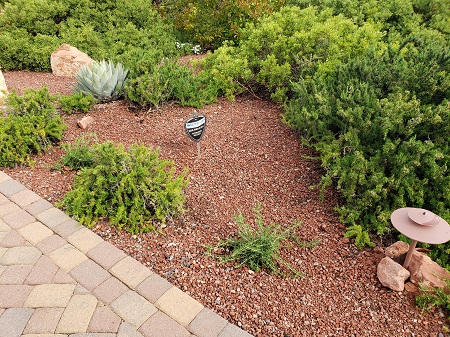 |
Decide that the empty space near your driveway needs a boulder. |
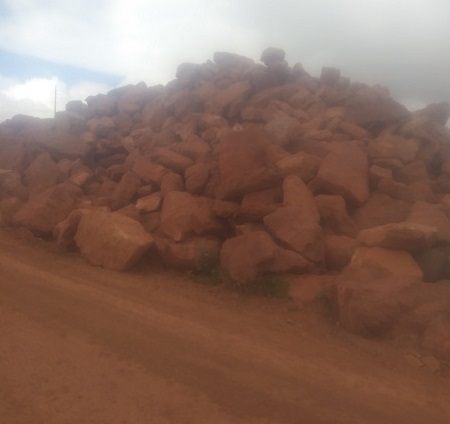 |
Find someone with a heap of boulders. Select a correctly sized one with character and arrange to have it delivered |
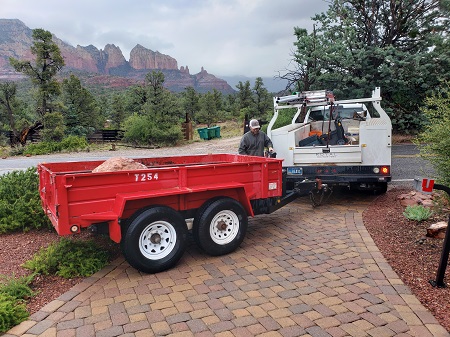 |
Be there when the boulder shows up. You don't want it to be misplaced since boulders are heavy. |
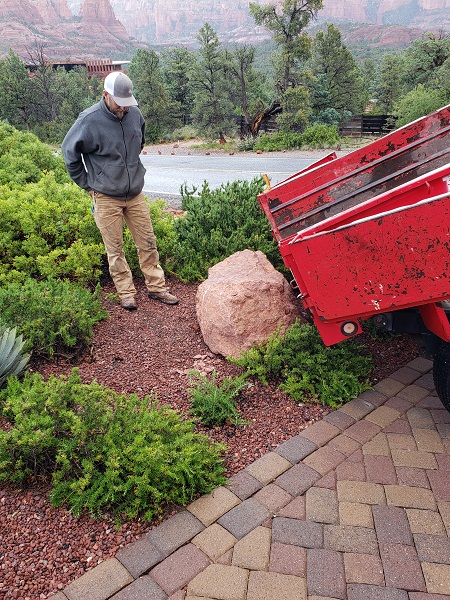 |
Instruct on approximate location for placement. You can't actually pick it up and put it down precisely. |
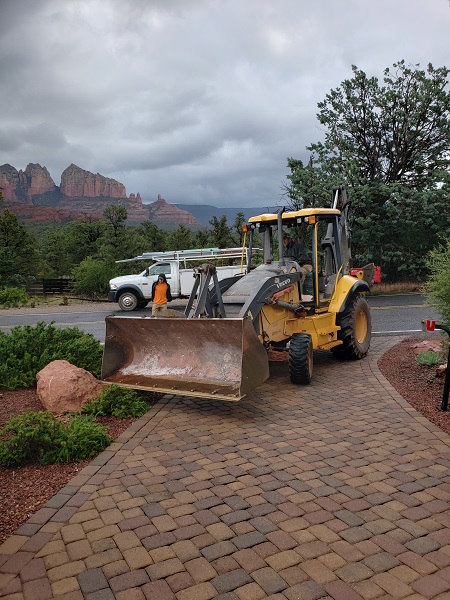 |
Hope that the deliverer fortuitously has a "backhoe down the road" as he put it. Use backhoe to nudge boulder into place. |
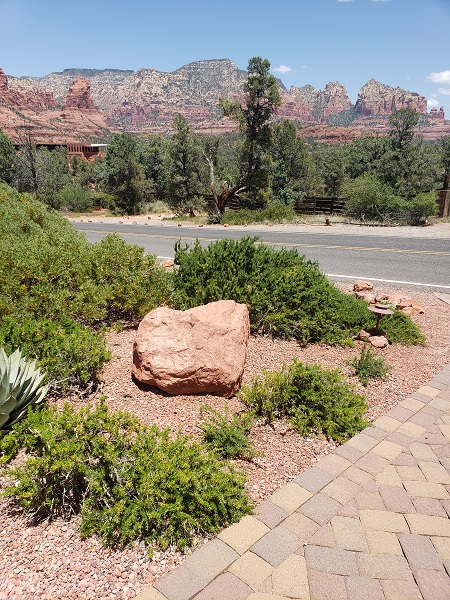 |
Espouse satisfaction with your new boulder, photograph it and, optionally, write a "how-to" for your blog. |
What is a Boulder?
One would think that this isn't a mystery. But in my woolgathering way, I spent some time thinking about and even more time discussing the essential nature of a boulder. Here in Sedona, Arizona, which bills itself as Red Rock Country, there is no shortage of red rocks. And red pebbles. And red mountains, although the latter are less majestic than, for example, the Rocky Mountains. The Sedona trails are coated with red pebbles, there are red rocks everywhere, and a selection of boulders often delimits the trail boundaries for the purpose of prohibiting vehicular conflict with pedestrians. But what of rocks of intermediate stature? When does a pebble become a rock? When is a rock promoted to boulder status? Does rock subsume all three intuitive size categories? Woolgathering failed to produce a viable distinction, so I resorted to the Wikipedia with little optimism. Sillime! Of course there's an answer, and here it is:
In geology, a boulder is a rock fragment with size greater than 25.6 centimetres (10.1 in) in diameter. Smaller pieces are called cobbles and pebbles. While a boulder may be small enough to move or roll manually, others are extremely massive. ... Smaller boulders are usually just called rocks or stones.
And there you (and I) have it! Although the above failed to distinguish between pebbles and their larger conspecifics, further investigation revealed that pebbles are smaller than 2.5 inches.
| © 2019 |
| Richard Factor |
NP: "Starship" Jefferson Starship
|
|
ToTD Somewhere on earth there's a person who doesn't have one of this T-shirt.
|
 |